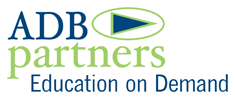 Strategic planning can seem so “back in the day” yet it is crucial for successful learning across in-person and online platforms. Too often in-person education services are TWWADI (the way we’ve always done it): annual conference, hot-topic workshops, etc. etc. Yes, digital is an active feature of today’s f2f experiences: Wi-Fi, hashtags, digital programs, mobile apps, and more. These digital components can be strong tactics and create an ambience of virtual networking. Yet the question remains: how do f2f education events connect to online learning? Are there barriers to unified professional development? For today and tomorrow, learning across platforms will be required. Read on for challenges to vibrant unified learning.
Strategic planning can seem so “back in the day” yet it is crucial for successful learning across in-person and online platforms. Too often in-person education services are TWWADI (the way we’ve always done it): annual conference, hot-topic workshops, etc. etc. Yes, digital is an active feature of today’s f2f experiences: Wi-Fi, hashtags, digital programs, mobile apps, and more. These digital components can be strong tactics and create an ambience of virtual networking. Yet the question remains: how do f2f education events connect to online learning? Are there barriers to unified professional development? For today and tomorrow, learning across platforms will be required. Read on for challenges to vibrant unified learning.
First Impressions: Originally one common approach for online learning was live event recording which was then posted on a website. Unfortunately, these early online “education” options often were unedited or rough cuts at best. As the old saying goes, “you never get a second chance to make a first impression.” Thus, out of frugality or lack of planning or both, associations established their online services as after-thoughts, not worth time or energy much less money, to consume. Thus an impression was established of less than professional learning experiences. First impressions die hard…they may become indelible.
Parallel Paths: Most organizations have an established array of education services, e.g., annual conference, workshops, seminars, legal updates, mentor programs, and other training options. These have been and continue to be delivered primarily via in-person settings. Since the emergence of the Internet,( Brief History of the Internet) and its explosion via the World Wide Web in the 1990s, companies and organizations have seized the use of online learning tools. Frequently digital education runs along a path parallel to the f2f events. Organizations keep both sets of experiences operational and often these paths do not cross. These parallel paths can be inefficient for both the organization and its members. Organizational resources are strained and members do not have clear paths for professional learning.
Separate Plans: When there is a strategic plan for education, it may have been initiated to promote in-person events rather than driven by standards-based professional development. Both meeting planning and professional development are critically important in offering quality education. Layer on technology and, in particular, online learning and organizations have four silos: meeting planning, in-person education, technology, and online learning. In Gillian Tett’s recent work, The Silo Effect (2015), she describes the perils of fragmentation where interconnected views are virtually impossible. In the learning organization with multiple plans for learning, whether articulated or implied, the lack of interconnections creates a weak, even non-existent, foundation for professional development. Separate education plans may stand on their own in their respective silos, but the effect on learning creates fragmented, disparate experiences. Making the connections among education experiences often is totally up to the learner. For professional excellence, unified planning for unified learning is non-negotiable.
In January 2016, ADB Partners and iCohere will present Unified Learning Design: Strategic Planning. This interactive, two-week online course begins on January 19, 2016; register now. Build on your organization’s education strengths to unify in-person and online learning through responsive strategic planning. Unify planning to unify learning: align, connect, sustain in-person and digital professional development.
Image by DGlodowska.
